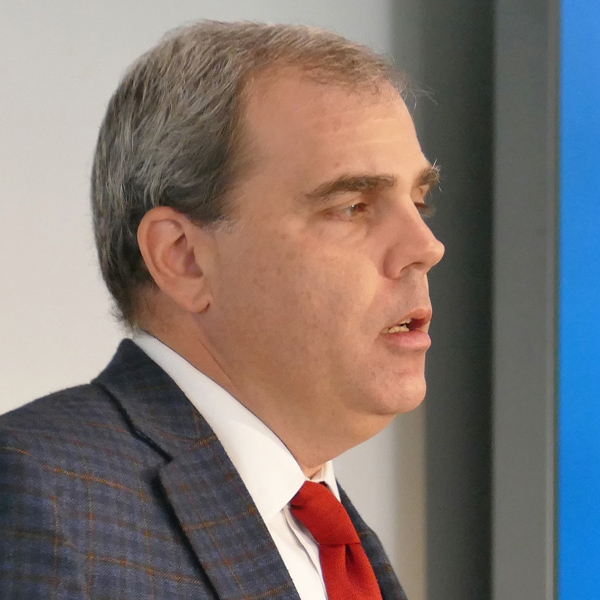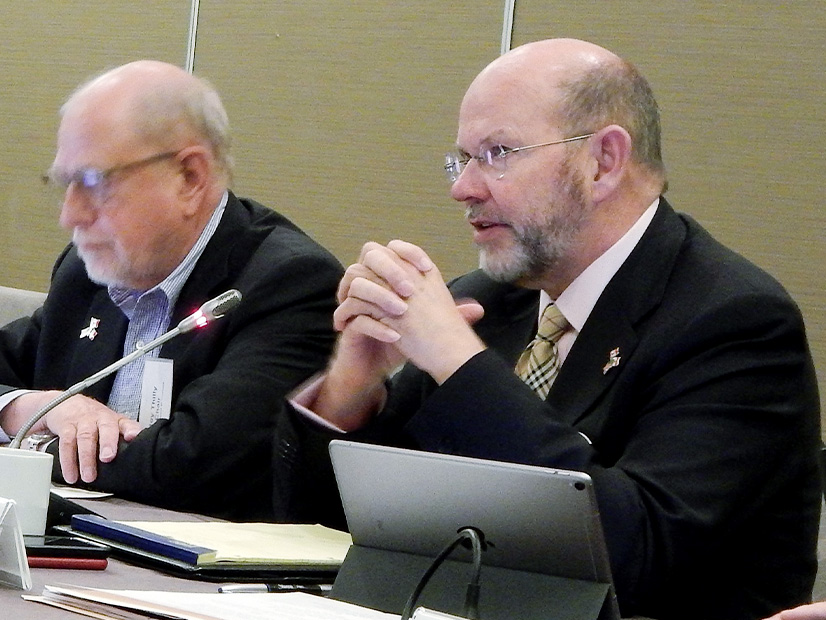NERC’s Robb Addresses Long-Term Reliability Assessment
Attending his first in-person meeting of the Texas Reliability Entity’s Board of Directors, NERC CEO Jim Robb was able to give directors, staff and stakeholders an early look at his organization’s annual Long-Term Reliability Assessment a day before it dropped.
“What’s really fascinating right now … is that the CEO of NERC is not supposed to be on the ‘Today’ show,” Robb said. “The fact that mainstream media has had such interest in the reliability assessments that we’ve been publishing … they used to be kind of very goal-oriented engineering studies, but starting around 2018, we started to see chinks in the armor of the industry from a reliability and resource adequacy perspective.
“Every year when we do the long-term assessment, we see the colored areas of the map that are the wrong color growing. [The latest assessment] continues the trends that we’ve seen. More and more areas of the country are at a greater risk of not being able to serve customers.”
NERC’s annual report assesses North American resource adequacy and identifies trends, emerging issues and potential risks for the next 10 years. This year’s report found most of the continent in either high-risk situations, where energy shortfalls could occur at normal peak conditions in one or more years, or elevated situations, where severe heat or cold could lead to shortfalls. (See NERC Warns of Ongoing Extreme Weather Risks.)
Robb said his resource adequacy concerns are driven by the industry’s transition to renewable resources. He said interconnection queues are overflowing with wind and solar projects and account for more than 1 TW of energy than is already on the ground.
“A lot of this stuff will never get built, so it just goes to show that there is a lot of capital and capital interest in investing in this new form of generation,” he said. “I think the transition is going to continue, and we need to get in front of it and really understand what that means.”
Given that the new technologies are different from what the industry is used to, Robb said it needs to change its mindset from capacity to focusing on energy and the ability to deliver it around the clock. He said changing weather patterns are becoming more extreme and frequent, creating more stresses on the system.
“What’s really sobering about the situation we’re in right now is that for the first time in a long time, our Long-Term Reliability Assessment is showing aggregate load that’s being driven after a number of years of reductions due to energy efficiency and attention to reducing peak capacity needs,” Robb said, warning that electrification could result in a five-fold increase in electricity demand.
“One of the things that we’re seeing in our reliability assessments is large areas of the country are moving in the wrong direction,” he said.
Robb suggested that pricing and retaining capacity not needed for everyday usage, building multistate transmission to “harvest” renewable resources and rebuilding the supply chain would address the situation.
“We’ve got to crack the code on transmission development, and it’s not a financing issue. The issue is getting sited,” he said. “So, there’s a lot of work to be done, to figure this all out.”
Texas RE’s 2023 Goals Set
Texas RE COO Joseph Younger said the organization is supporting the ERO Enterprise’s long-term strategy across five focus areas:
- expanding risk-based focus in standards, compliance monitoring and enforcement programs;
- assessing and accelerating steps to mitigate known and emerging risks to reliability and security;
- building a strong Electricity Information Sharing and Analysis Center (E-ISAC)-based security capability;
- strengthening engagement across North America’s reliability and security ecosystem; and
- capturing effectiveness, efficiency and continuous improvement opportunities.
“Our staff has really looked at ways to improve all facets of the organization,” Younger said. “We’re continuing to support the ERO and our industry stakeholders as we look to leverage those tools and enhance our processes and our security.”
Younger promised more information on NERC’s biannual GridEx exercise as its Nov. 14-15 dates approach. The event, GridEx VII, is the largest grid security exercise in North America. It provides a forum for E-ISAC member and partner organizations to practice their response and recovery from coordinated cyber and physical security threats and incidents.
NERC, Texas RE to Discuss Odessa Disturbance
Appearing earlier before the Member Representatives Committee, Younger said that NERC and the regional entity will both hold webinars on what has become known as the “Odessa Disturbance,” an inverter-based resource disruption in West Texas this summer.

The two organizations worked together on an event analysis that they released Dec. 8. The report documents the June 4 event near Odessa and differentiates it from a similar event in the same location the previous year. ERCOT lost 2,555 MW of solar PV and synchronous generation during the event.
NERC and Texas RE called for “immediate industry action” to ensure that IBRs do not pose a threat to grid reliability. (See NERC Repeats IBR Warnings After Second Odessa Event.)
NERC will hold an industry webinar Jan. 4 to review the report’s findings and recommended actions, and answer questions. Texas RE will discuss the event during a Talk with Texas RE session on Jan. 24.
In its only voting item, the MRC approved a 15-day ballot period for staff’s proposed regional standards development process (RSDP). A standard drafted team has completed a red-lined version of revisions that lay out how Texas RE can obtain regional variances to NERC Reliability Standards.
If the ballot passes, the MRC will send it on to the Texas RE’s board. Assuming its approval, the entity will send the standards authorization request to NERC for a 45-day public posting and its eventual adoption.
Members Re-elect 2 Directors
During the Texas RE’s annual meeting, sandwiched between the board and MRC meetings, members re-elected Directors Crystal Ashby and Jeffrey Corbett to three-year terms.
Ashby was also selected by the board’s Nominating Committee to serve as vice chair next year. Board Chair Milton Lee was re-elected.



